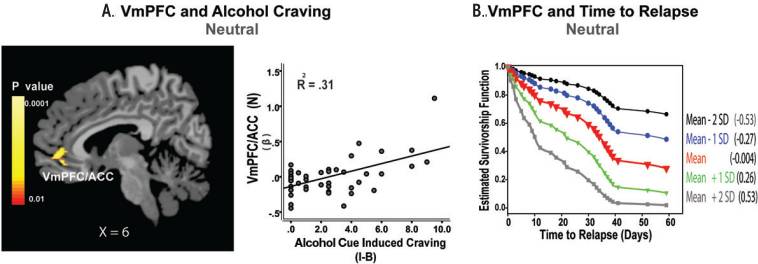What are the implications of alcoholism in neuroplasticity?

Authors: Mihaela Molnar, Livia Popa
Keywords: neuronal plasticity, alcoholism, central nervous system
Introduction | What are the implications of alcoholism in neuroplasticity?
Short-term and long-term alcohol consumption affects different structures, which in turn have an impact on a wide range of cells and organ systems throughout the body. Many of the epigenetic changes brought on by alcohol can influence cellular responses that eventually result in behavioral tolerance and alcohol dependency [1].
There is an interesting insight in examining how alcohol alters the structure and function of the brain, influencing neuroplasticity and leading to neuro-adaptations that can alter the brain’s reward and decision-making centers and, in return, affect relapse and recovery [2].
Recent studies indicate a connection between chronic excessive alcohol use and neuronal alterations that affect crucial central nervous system (CNS) processes, including:
- homeostasis
- mood regulation
- and decision-making [2].
What is neuroplasticity?
The capacity of the brain to modify, alter, and adapt its structure and function throughout a person’s life and in response to experience or injury is referred to as “neuroplasticity” (Figure 1) [3].

Experience-dependent cortical plasticity is strongly influenced by age. Early in life, during time-limited periods of stimulus-driven plasticity known as “critical periods”, significant structural and functional changes commonly take place [3].
How is neuroplasticity influenced by alcohol intake?
Most of the time, neuroplastic alterations caused by alcohol or other addictive drugs may have a negative influence on neuroplasticity linked to dysfunctional and maladaptive behaviors [2].
In investigations of alcoholism, there is strong evidence that alcohol has both short- and long-term pharmacological effects on the nervous system and corresponding neurophysiological dysfunction [2]:
- Neuroadaptations in the prefrontal-striatal-limbic (PSL) circuit, which helps control motivation and emotion – caused by both acute and chronic alcohol use [2];
- Excitatory neurotransmission in the CNS is anticipated to occur primarily at dendritic spines, which are thought to be the primary sites of synaptic plasticity in the brain [4].
What is the response of the brain after acute alcohol consumption?
According to neuroimaging research, acute alcohol intake in healthy social drinkers has various consequences, as showcased in Figure 2 [2].

Researchers showed that healthy people who received an intoxication dosage of alcohol through intravenous injection had decreased limbic reactivity to scary faces and increased striatal activity. Alcohol use decreased the connection between the orbitofrontal cortex (OFC) and amygdala, indicating that the regulatory portion of the brain interacts less with the amygdala while processing socioemotional inputs while intoxicated.
A different sample of healthy but frequent social drinkers showed increased activity in the ventromedial prefrontal cortex (VmPFC), the anterior cingulate cortex (ACC), and the ventral striatum in response to an alcohol taste signal [2].
Neuroimaging studies have shown how alcohol significantly affects healthy people through changes in the PSL circuit:
- diminished limbic response to unpleasant emotional stimuli;
- increased striatal response to pleasant emotional stimuli and risky decision-making;
- impaired episodic memory performance [2].
These findings reveal that the PSL circuit is an important target of alcohol usage, and chronic intake may negatively impact neuroplasticity [2].
Can neuroadaptation play a role in chronic alcoholism and recovery?
Numerous studies have pointed out that drinking causes neuroadaptive modifications in the PSL circuit as well as allostatic changes in the ANS (autonomic nervous system) and HPA (hypothalamic-pituitary-adrenal) axis systems and other physiological processes [2].
The affected regions and systems are presented in Figure 3 [2].

What is the reward system dysfunction?
The functioning of the striatal reward system is crucial for the onset of alcoholism and continues to influence the disease progression by impairing alcohol recovery (see Table 1) [2].

How does stress impact alcohol craving and excessive drinking?
Chronic alcoholics commonly describe significant stress sensitivity and severe cravings promoted by stress. If excessive alcohol use persists, stress sensitivity becomes a key factor in “negatively reinforced wanting”, which is an increase in alcohol seeking to numb unpleasant feelings or stimuli [2].
Chronic alcoholism is linked to poor autonomic control expressed by:
- elevated blood pressure
- low heart rate variability
- high basal heart rate [2].
The amygdala is engaged in stress-induced physiological reactions through the regulation of corticotropin-releasing factor and norepinephrine pathways, which may negatively affect reinforced desire and alcohol-seeking. Recent studies have shown that patients with AUD who relapsed had reduced amygdala volume [2].
What is the role of the prefrontal cortex in alcohol recovery?
Chronic alcohol use may gradually damage prefrontal executive function, making it more difficult to overcome alcoholism. Various neuroimaging studies have shown structural and functional deficiencies in prefrontal regulatory areas linked to long-term drinking (see Table 2) [2].

What is neuronal hyperexcitability?
Recent research reveals that heavy, ongoing alcohol use may cause CNS neurons to become too excitable, which may contribute to alcohol addiction and recovery (see Figure 4) [2].

Hyperactivity in the VmPFC and ACC of individuals who were exposed to alcohol cues indicates increased alcohol appetite (image 1A) and predicts a shorter time to relapse (image 1B) [2].
Conclusion: How does alcohol influence neuroplasticity?
Alcoholism recovery is a difficult and prolonged process with a high relapse rate. Therefore, a key factor in enhancing therapeutic results has been a better understanding of why patients relapse [2].
Different adaptive changes in the brain are brought on by prolonged exposure to or consumption of alcohol, including:
- adjustments to neurotransmitter release or receptor functionality
- modifications to the density and shape of dendritic spines
- macrostructural arrangements to the volume of particular brain regions.
Each of these modifications may potentially contribute to the abnormal learning, maladaptive motivation, and maladaptive cognition that characterize alcoholism [4].
For more information on neurorehabilitation, visit:
- The importance of physical activity in neurorecovery
- Intrinsic Mechanisms of Acupuncture in Ischemic Stroke RehabilitationRobotic neurorehabilitation for the upper limb – new insights
- Efficacy of placebo in managing pain for neurological disorders
We kindly invite you to browse our Interview category: https://efnr.org/category/interviews/. You will find informative discussions with renowned specialists in the field of neurorehabilitation.
References
- Jangra A, Sriram CS, Pandey S, Choubey P, et al. Epigenetic Modifications, Alcoholic Brain and Potential Drug Targets. Annals of Neuroscience 2016; 23:246-260. doi: 10.1159/000449486
- Seo D, Sinha R. Neuroplasticity and Predictors of Alcohol Recovery. Alcohol Research: Current Reviews. 2015; 37(1):143-152. Available from: https://www.ncbi.nlm.nih.gov/pmc/articles/PMC4476600/
- Voss P, Thomas ME, Cisneros-Franco JM, de Villers-Sidani E. Dynamic Brains and the Changing Rules of Neuroplasticity: Implications of Learning and Recovery. Frontiers in Psychology. 2017. doi: 10.3389/fpsyg.2017.01657
- JGass JT, Olive MF. Neurochemical and Neurostructural Plasticty in Alcoholism. ACS Chemical Neuroscience. 2012. doi: 10.1021/cn300013p









